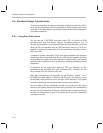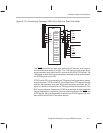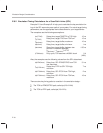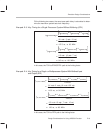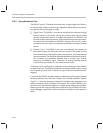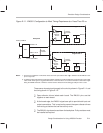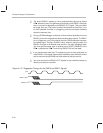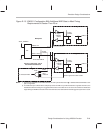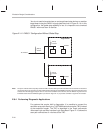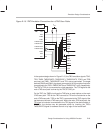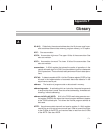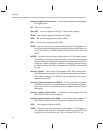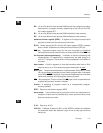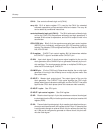
Emulation Design Considerations
E-24
You do not need to have devices on one target board stop devices on another
target board using the EMU0/1 signals (see the circuit in Figure E–14). In this
configuration, the global-stop capability is lost. It is important not to overload
EMU0/1 with more than 16 devices.
Figure E–14. EMU0/1 Configuration Without Global Stop
EMU0/1
To emulator
. . .
EMU0/1
. . .
Device Device
EMU0/1
. . .
. . .
. . .
1
n
Device Device
1
n
. . .
Target board m
Target board 1
Pullup
resistor
Pullup
resistor
Pullup
resistor
Note: The open-collector driver and pullup resistor on EMU1 must be able to provide rise/fall times of less than 25 ns. Rise times
of more than 25 ns can cause the emulator to detect false edges during the RUNB command or when the external counter
selected from the debugger analysis menu is used. If this condition cannot be met, then the EMU0/1 signals from the
individual boards must be ANDed together (as shown in Figure E–14) to produce an EMU0/1 signal for the emulator.
E.8.4 Performing Diagnostic Applications
For systems that require built-in diagnostics, it is possible to connect the
emulation scan path directly to a TI ACT8990 test bus controller (TBC) instead
of the emulation header. The TBC is described in the Texas Instruments
Advanced Logic and Bus Interface Logic Data Book
. Figure E–15 shows the
scan path connections of
n
devices to the TBC.



